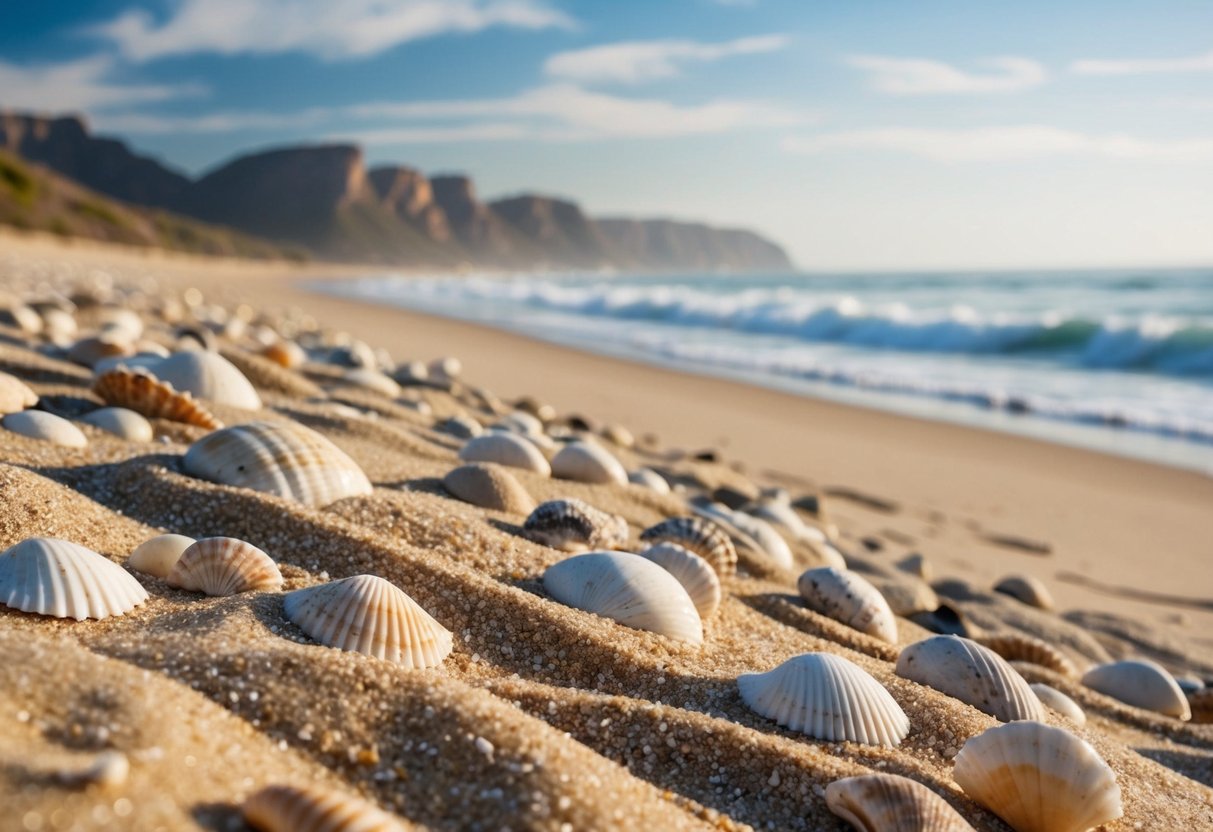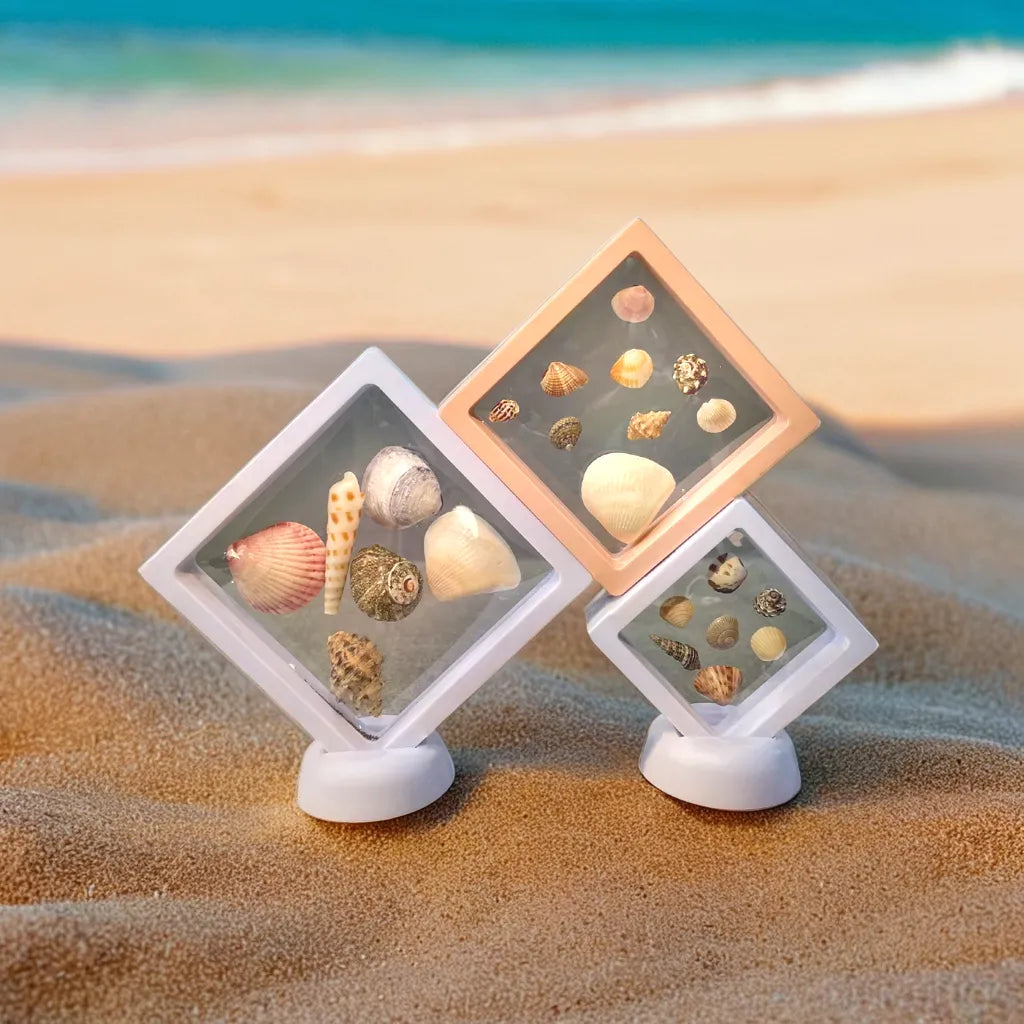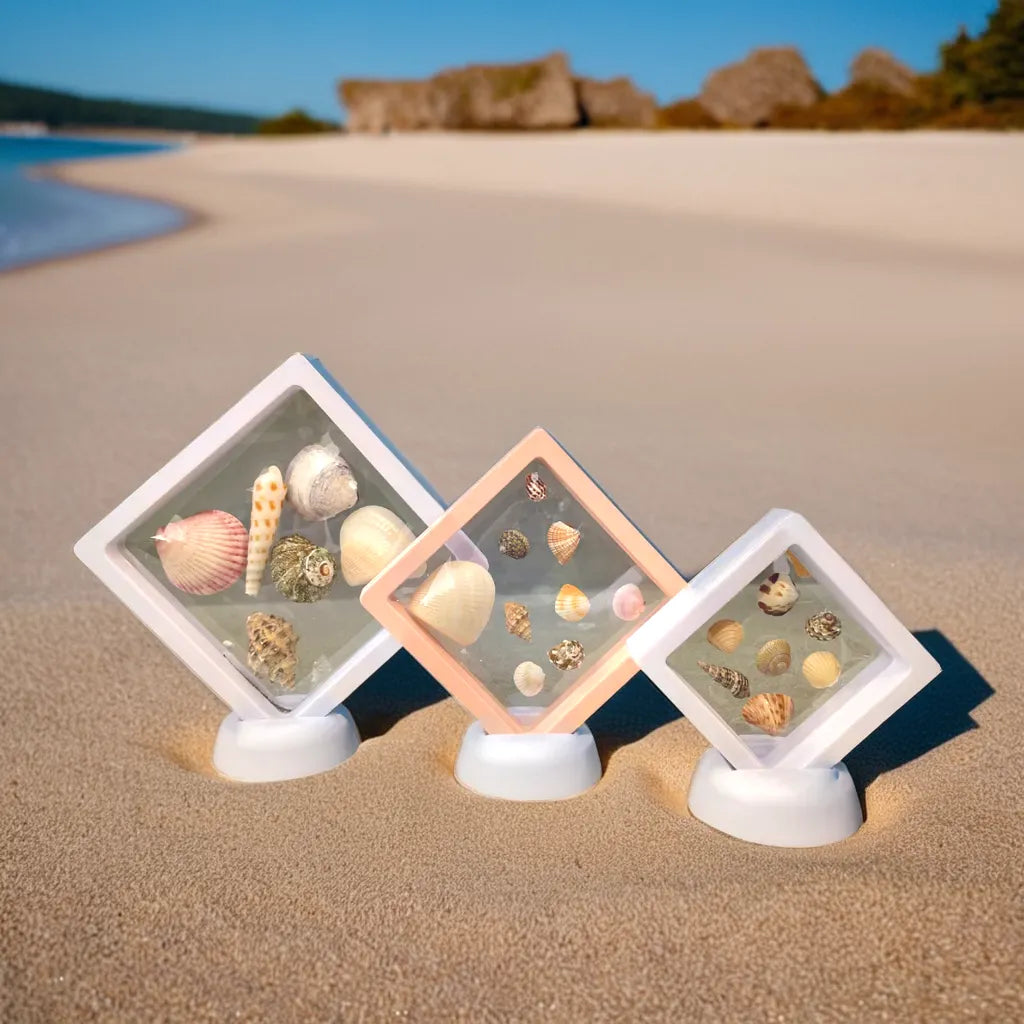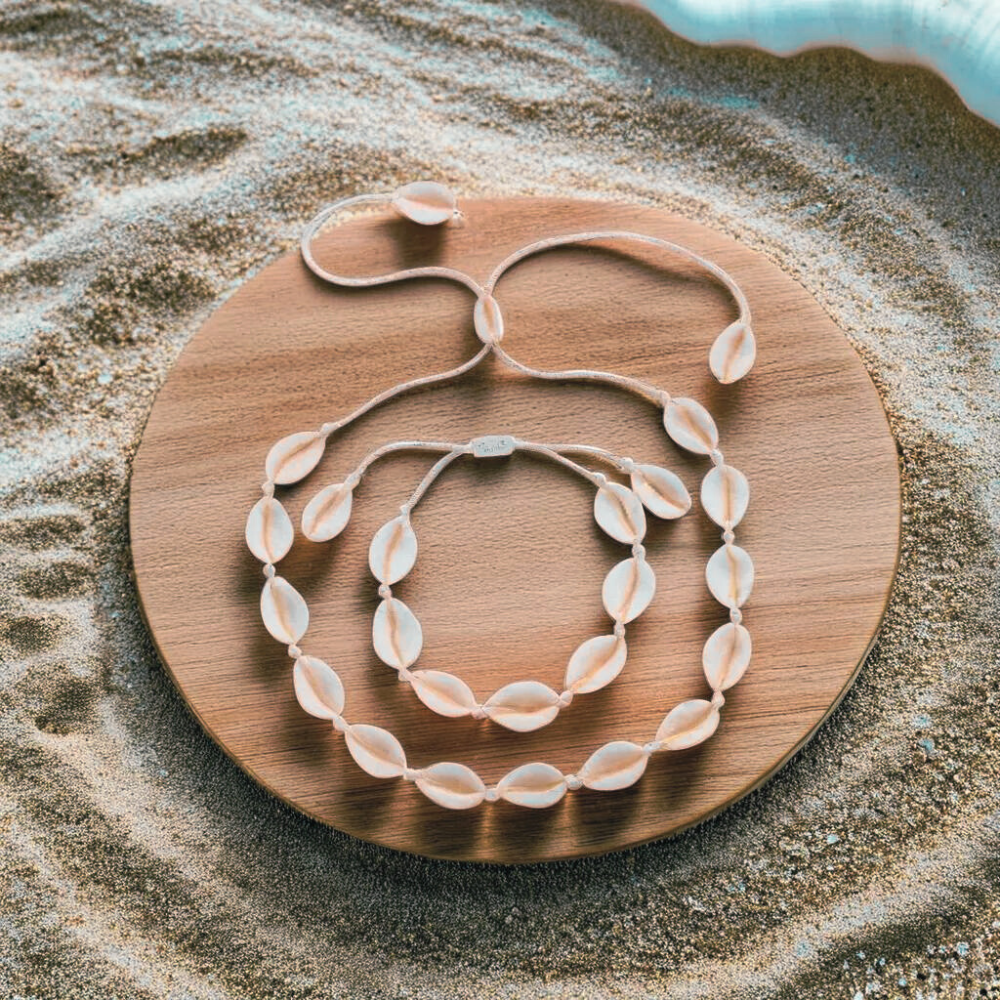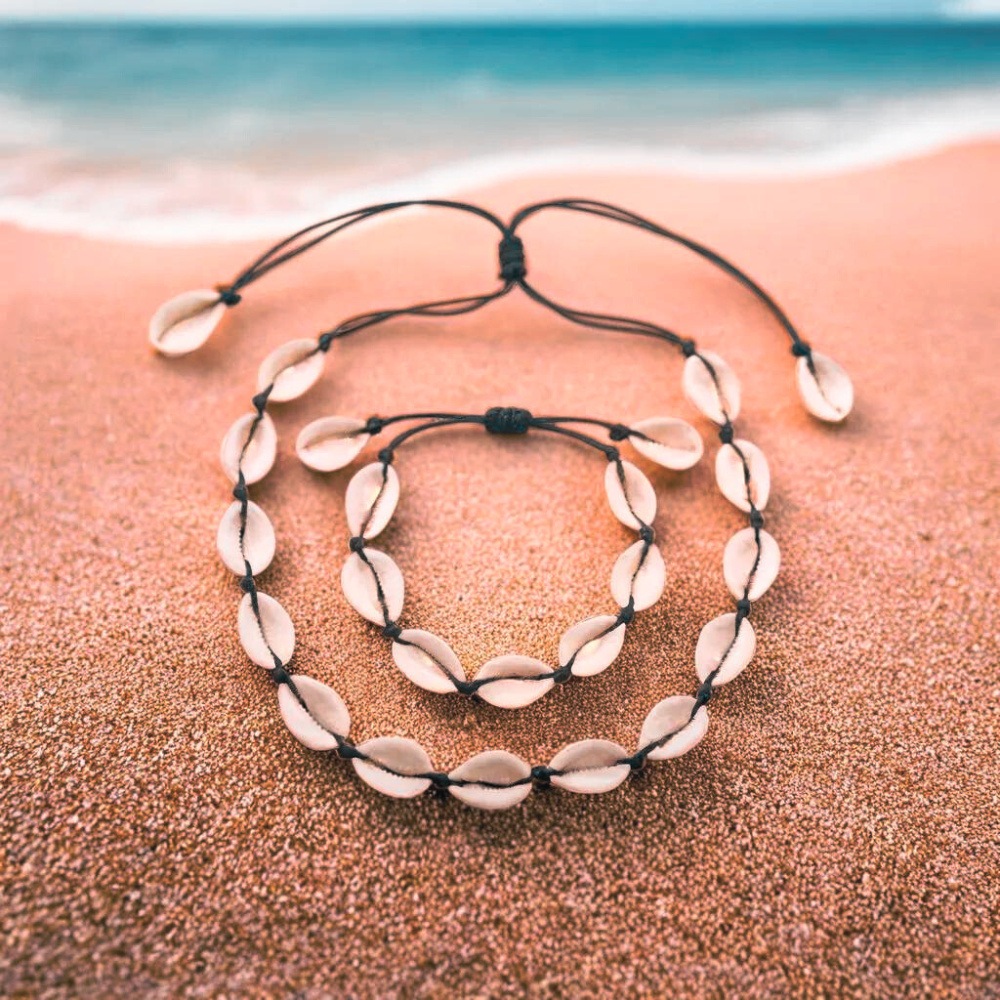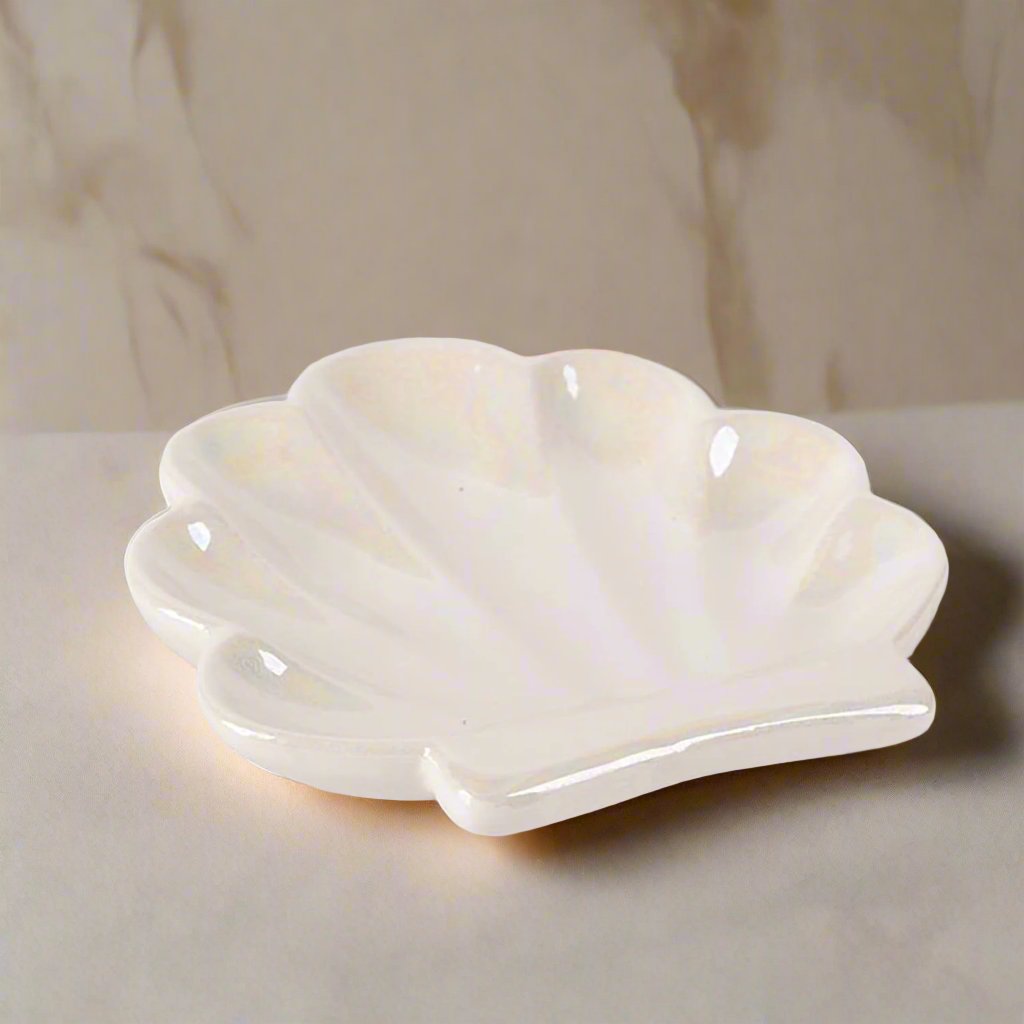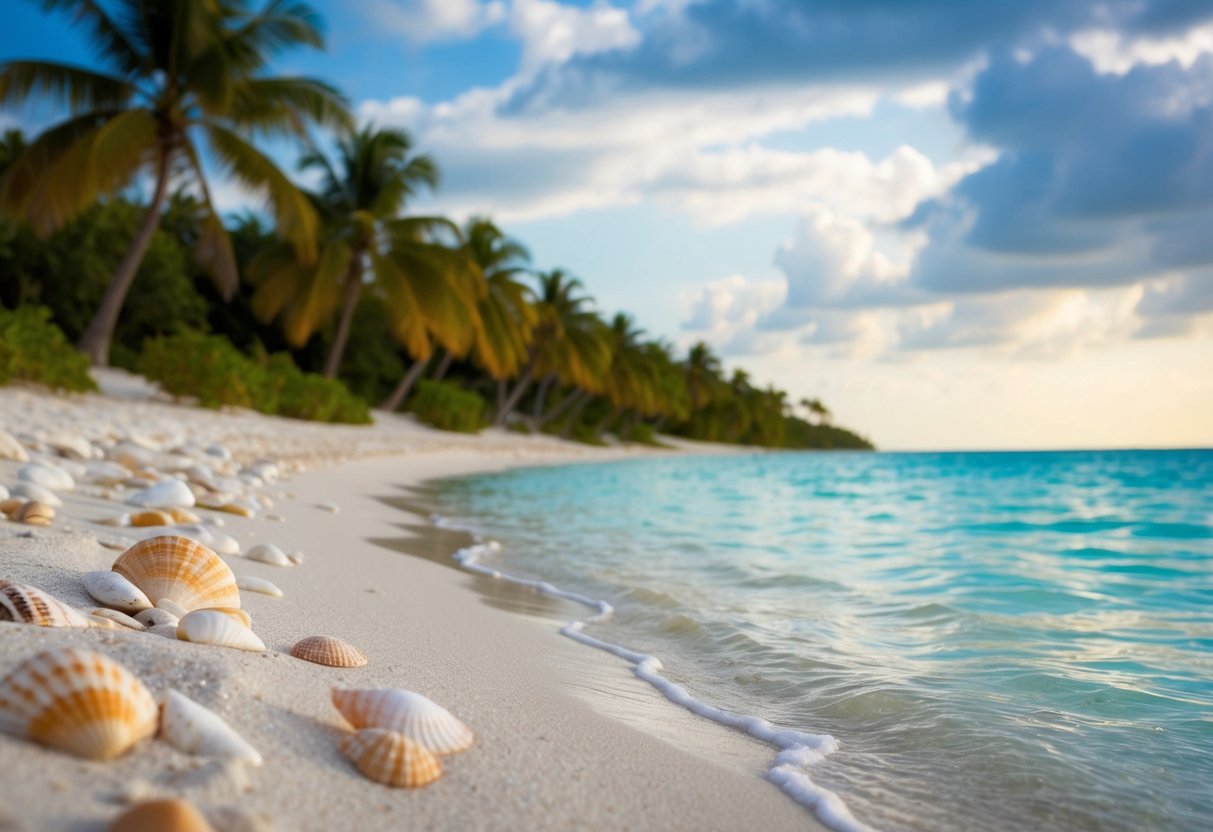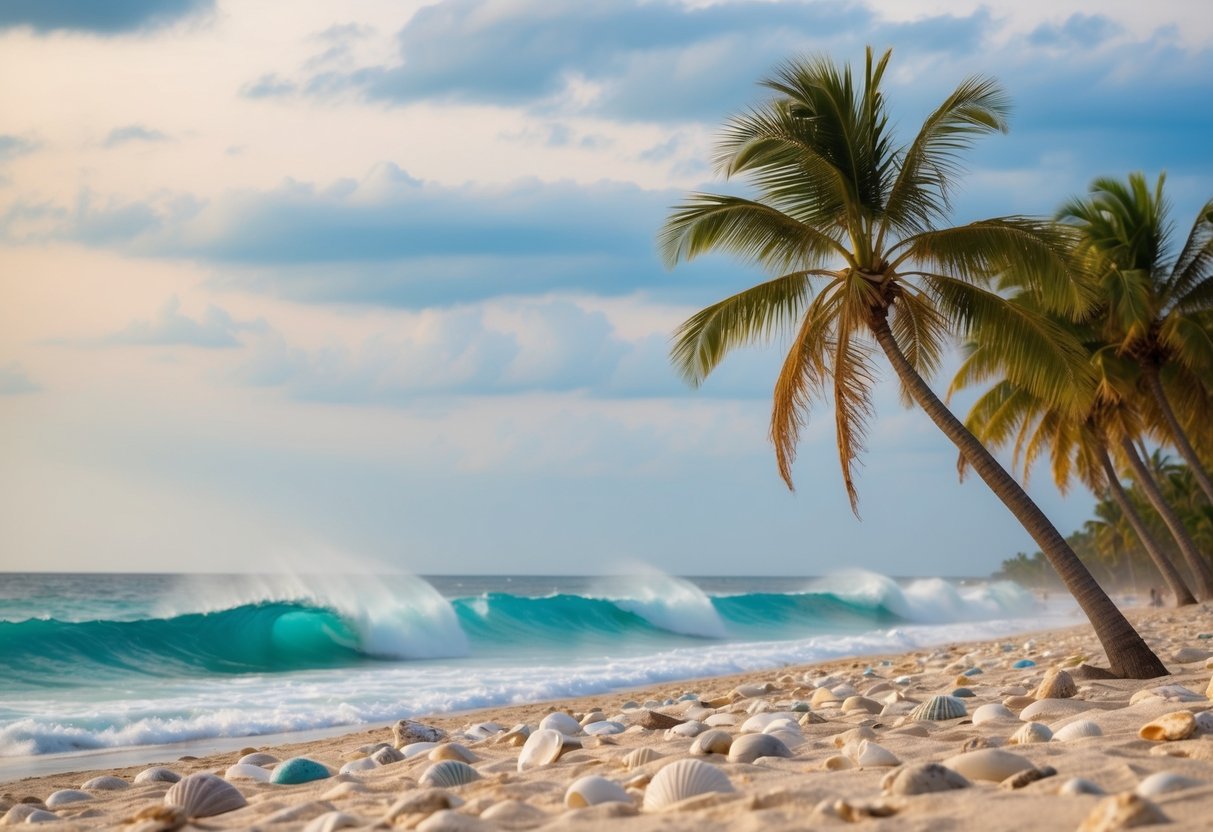South Africa's coastline offers a treasure trove for shell collectors. From pristine beaches to hidden coves, the country's diverse shores provide ample opportunities to find beautiful and unique shells. Many beaches along the coast are known for their abundance of shells washed up by the tides.
 Shell collecting is a popular activity for both locals and tourists visiting South Africa's beaches. Enthusiasts can discover a wide variety of shells, from tiny cowries to large conches. The best shelling spots often change with the seasons and weather patterns, so timing can be key for a successful shell-hunting expedition.
Shell collecting is a popular activity for both locals and tourists visiting South Africa's beaches. Enthusiasts can discover a wide variety of shells, from tiny cowries to large conches. The best shelling spots often change with the seasons and weather patterns, so timing can be key for a successful shell-hunting expedition.
 Shell collecting is a popular activity for both locals and tourists visiting South Africa's beaches. Enthusiasts can discover a wide variety of shells, from tiny cowries to large conches. The best shelling spots often change with the seasons and weather patterns, so timing can be key for a successful shell-hunting expedition.
Shell collecting is a popular activity for both locals and tourists visiting South Africa's beaches. Enthusiasts can discover a wide variety of shells, from tiny cowries to large conches. The best shelling spots often change with the seasons and weather patterns, so timing can be key for a successful shell-hunting expedition.
1) Boulders Beach, Western Cape
Boulders Beach is a unique shelling spot in Simon's Town, Cape Town. It's part of Table Mountain National Park and known for its large granite boulders and sandy coves. The beach is famous for its African penguin colony. Visitors can see these birds up close in their natural habitat, a rare experience found only here. Shells can be found among the rocks and in the shallow waters. Common types include limpets, mussels, and periwinkles. The best time for shelling is early morning or after storms. The beach has clear, calm waters perfect for swimming and snorkeling. Tourists can explore the area on wooden walkways that protect the penguins' nesting sites. Boulders Beach offers a mix of nature and fun. It's a great place for families, with picnic spots and safe swimming areas. The unusual combo of penguins and shells makes it a top beach destination in South Africa.2) Coffee Bay, Eastern Cape
Coffee Bay is a hidden gem on South Africa's Wild Coast. This beach gets its name from a shipwreck that spilled coffee beans along the shore in 1893. The bay boasts fine sand and clear waters. Visitors can explore rock pools and admire the scenic coastline. The beach is known for its cleanliness and flat terrain. Coffee Bay is popular for surfing. The waves attract both beginners and experienced surfers. The area also offers great hiking opportunities along the coast. One notable hike leads to Hole in the Wall, a unique rock formation. This 11-kilometer trail showcases the natural beauty of the Eastern Cape. Coffee Bay's unspoiled environment makes it ideal for shell collecting. Beachcombers can find a variety of shells washed up on the shore. The relaxed atmosphere and stunning scenery make Coffee Bay a favorite spot for nature lovers. It's a perfect place to unwind and enjoy South Africa's coastal beauty.3) Sudwana Bay, KwaZulu-Natal
Sudwana Bay sits on the northern coast of KwaZulu-Natal, South Africa. It's part of the iSimangaliso Wetland Park, a protected area known for its natural beauty. The bay offers pristine beaches with golden sand. Shelling enthusiasts can find a variety of shells along the shoreline. The area's rich marine life contributes to the diversity of shells that wash up on the beach. Visitors can explore the beach at low tide to find the best shells. Common finds include cowries, cockles, and sand dollars. The bay's remote location means less foot traffic, increasing the chances of finding unique specimens. Sudwana Bay is also famous for its coral reefs. These reefs provide habitats for many shell-producing creatures. As a result, the beaches often have an interesting mix of both common and rare shells. The best time for shelling is after storms or strong tides. These events often bring new shells to the shore. Beachcombers should respect local regulations and avoid taking live shells or damaging the environment.4) Plettenberg Bay, Western Cape
Plettenberg Bay, located on South Africa's Western Cape, boasts beautiful beaches ideal for shelling. The area's long stretches of golden sand offer ample opportunities for beachcombers. Lookout Beach is a top spot for finding Pansy Shells, a prized discovery for shell collectors. Visitors can enjoy long walks along the ocean, searching for these unique treasures. The bay's pristine beaches extend for about 15 kilometers, giving shell seekers plenty of space to explore. The warm waters of the Indian Ocean wash up a variety of shells onto the shore. Robberg 5 Beach, known as Plettenberg Bay's finest, is another excellent location for shell hunting. This Blue Flag beach connects the town's central beaches to the rocky Robberg Peninsula. Keurboomstrand, a nearby beach, offers more shelling possibilities. Its wide, unspoiled stretch of sand is perfect for leisurely strolls while scanning for interesting shells. The area's diverse coastal environment, from sandy shores to rocky outcrops, creates ideal conditions for finding a wide range of shell types. This makes Plettenberg Bay a must-visit destination for shell enthusiasts.5) Jeffreys Bay, Eastern Cape
Jeffreys Bay is a coastal town in South Africa's Eastern Cape province. It's famous for its beautiful beaches and world-class surfing spots. Paradise Beach in Jeffreys Bay is a top spot for shell collectors. It offers a wide variety of shells and is quieter than some other beaches in the area. Visitors to Paradise Beach can find many different types of shells along the shoreline. The beach's calm atmosphere makes it perfect for leisurely walks while searching for unique shell specimens. Jeffreys Bay's beaches are known for their cleanliness and stunning views. This adds to the enjoyment of shelling activities in the area. While Jeffreys Bay is most famous for surfing, its beaches offer much more. Shell enthusiasts will find plenty to explore along the town's coastline. The area between the Gamtoos and Kabeljous rivers near Jeffreys Bay also provides interesting coastal landscapes. These areas may offer additional shelling opportunities for visitors.6) Noordhoek Beach, Western Cape
Noordhoek Beach is a hidden gem for shell collectors in South Africa. This stunning stretch of coastline is located on the western side of the Cape Peninsula, just south of Chapman's Peak Drive. The beach spans an impressive 8 kilometers, making it one of the longest in South Africa. Its wide expanse of sand, averaging 200 meters across, provides ample space for beachcombers to explore. Noordhoek's exposed location means it often experiences breezy conditions. These winds can bring in a variety of shells from the ocean, creating exciting opportunities for shell hunters. While swimming is not advised due to strong waves, the beach is perfect for long walks and shell collecting. Visitors can also enjoy horseback riding along the shoreline, adding to the beach's charm. Before collecting shells, it's important to obtain a permit from the South African Post Office. These permits outline the limits for different marine species collection. For safety, visitors should be aware that Noordhoek Beach can be quite remote. It's wise to go shelling with a companion and stay alert to changing tide conditions.7) Umdloti Beach, KwaZulu-Natal
Umdloti Beach is a hidden gem for shell collectors on South Africa's KwaZulu-Natal coast. Located about 24 kilometers northeast of Durban, this small resort village offers a peaceful setting for beachcombing. The beach stretches along the mouth of the Mdloti River, creating diverse habitats for marine life. This environment produces a variety of shells for visitors to discover. Tidal pools dot the coastline, providing safe areas to search for smaller shells and sea glass. The best time for shelling is often after storms or at low tide when new treasures wash ashore. Umdloti's relatively uncrowded shores allow shell hunters to explore at their own pace. Visitors can find common varieties like cowries, sand dollars, and scallops along the beach. While enjoying shell collecting, beachgoers can also take in views of the Indian Ocean. The area is known for its scenic beauty and opportunities to spot dolphins playing in the waves.8) Hermanus Beach, Western Cape
Hermanus Beach offers a great spot for shell collecting in South Africa's Western Cape. This coastal town is known for its beautiful beaches and dramatic ocean views. Sandbaai Beach is a prime location for shelling enthusiasts. The area features lovely stretches of sand where visitors can search for unique shells washed up by the waves. Kammabaai Beach is another excellent option for shell hunters. During peak season, lifeguards are on duty, making it a safe place for beachcombing. The beaches around Hermanus boast crystal-clear waters, enhancing the shell-finding experience. Visitors can easily spot interesting specimens in the shallow areas. Hermanus' coastline spans about 18 kilometers, providing ample opportunities for shell collectors. The diverse beach environments increase the chances of finding a variety of shells. While exploring Hermanus' beaches, shell seekers may also enjoy watching the dramatic waves. The area's natural beauty adds to the enjoyment of the shelling experience.9) Umhlanga Rocks, KwaZulu-Natal
Umhlanga Rocks is a coastal town located about 20 kilometers north of Durban. It's known for its beautiful beaches and is popular with both tourists and locals. The main beach at Umhlanga Rocks is a prime spot for shell collecting. Visitors can find a variety of shells along the shoreline, especially after stormy weather. The town has a permanent population of around 50,000 people. It offers a mix of residential areas and tourist attractions, including shopping malls and restaurants. Umhlanga Rocks features a scenic promenade along the beachfront. This walkway is great for strolls and taking in the ocean views while looking for shells. The area's proximity to Durban makes it an easy day trip for city dwellers. It's a good option for those who want to escape the bustle of Durban for some beach time. While Umhlanga Rocks is a beloved destination, recent reports suggest some concerns about water quality. Visitors should check current conditions before planning their trip.10) Robberg Beach, Plettenberg Bay
Robberg Beach is a stunning stretch of coastline in Plettenberg Bay, South Africa. This beach is known for its pristine sand and clear waters, making it a popular spot for beachgoers and shell collectors. The beach runs along Beachy Head Drive, south of the Beacon Isle Hotel. It connects the town's central beaches to the rocky Robberg Peninsula, a nearby nature reserve. Robberg Beach has been awarded Blue Flag status, which means it meets high standards for water quality and facilities. This recognition makes it one of South Africa's top beaches. Visitors can enjoy calm waters and gentle waves, ideal for swimming and other water activities. The beach's warm temperatures add to its appeal for those looking to take a dip. Shell seekers will find plenty to explore along Robberg Beach's shoreline. The area's diverse marine life contributes to a variety of shells that wash up on the sand. The beach offers ample space for walking and relaxing. Its long stretches of pale sand provide perfect conditions for beachcombing and shell hunting.Geography and Terrain
South Africa's coastline offers diverse landscapes for shell collecting. The country's unique geography and climate shape its beaches and marine life.Coastal Regions
South Africa has over 2,500 km of coastline along two oceans. The west coast faces the Atlantic Ocean. It has cold waters and rocky shores. The south and east coasts meet the Indian Ocean. These areas have warmer waters and sandy beaches. The Western Cape has many bays and coves. Shells often wash up here after storms. The Eastern Cape has long stretches of beach. Its shallow waters are good for finding shells. KwaZulu-Natal's coast is tropical. It has coral reefs that create unique shells. The Wild Coast is rugged with hidden beaches. These spots can yield rare finds for shell hunters.Climate and Weather Patterns
South Africa's climate varies by region. This affects shelling conditions. The west coast is cooler and drier. Winter storms here can bring in shells from deep waters. The south coast has a mild climate. It gets rain year-round. This steady weather helps maintain consistent shell populations. The east coast is warm and humid. Summer rains can wash shells onto beaches. Winter brings calmer seas, ideal for beachcombing. Tides play a big role in shelling. Low tides expose more beach area. The best times to look for shells are after high tides or storms.Marine Life and Biodiversity
South Africa's coastline teems with diverse marine life. Unique ocean currents and varied habitats support thousands of species, including many rare shells. Efforts to protect these ecosystems aim to preserve the country's rich marine biodiversity for future generations.Common Shell Species
South African beaches offer shell collectors a wealth of finds. The cowrie shell, with its glossy surface and spotted patterns, is a favorite. Larger specimens like the giant African triton can reach impressive sizes. Colorful cone shells add vibrant hues to collections. Delicate sand dollars wash up on many shores. Their flat, round shapes make them stand out. Spiral-shaped turban shells come in various sizes and colors. Abalone shells, prized for their iridescent interiors, can sometimes be found. Some beaches yield rare finds like paper nautilus shells. These thin, white structures belong to a type of octopus. Lucky beachcombers might spot lightning whelk shells with their distinctive left-handed spirals.Conservation Efforts
South Africa takes steps to protect its marine environments. The country has set up Marine Protected Areas (MPAs) along its coast. These zones limit human activities to safeguard ocean life. Strict rules govern shell collecting. Permits are required, and limits are set on what can be taken. This helps prevent over-harvesting of popular species. Some areas ban shell removal completely to preserve natural habitats. Education programs teach people about marine ecosystems. These efforts raise awareness about the importance of ocean conservation. Beach clean-ups involve local communities in protecting coastal areas. Scientists monitor marine populations to track changes. This data helps shape conservation policies. Efforts to reduce pollution and control invasive species also play key roles in preserving biodiversity.Best Practices for Shelling
Shelling can be a fun and rewarding activity when done properly. Using the right tools and following ethical guidelines helps protect beaches and marine life.Tools and Equipment
A few basic items can make shelling more enjoyable:- Mesh bag: Allows sand and water to drain
- Small shovel or trowel: For digging in sand
- Bucket: To hold larger shells
- Magnifying glass: To examine tiny shells
- Gloves: To protect hands from sharp edges
- Sturdy shoes: For walking on rocky areas
- Sun protection: Hat, sunscreen, sunglasses
Ethical Shelling Guidelines
Responsible shelling helps preserve beach ecosystems:- Take only empty shells
- Leave live animals in place
- Don't take too many shells from one spot
- Follow local rules on shell collection
- Avoid damaging plants or disturbing wildlife
- Fill in any holes dug in the sand
Local Regulations and Permits
Shelling on South African beaches requires following specific rules and obtaining permits. The South African Post Office sells permits for collecting marine species. These permits list limits for each type of species that can be gathered. It's important to check local regulations before shelling. Some areas may have restrictions or bans on collecting shells and marine life. Municipalities can prohibit activities on certain parts of beaches through posted notices or signs. Permits help protect marine ecosystems by regulating how much can be collected. They ensure shelling remains sustainable and doesn't harm local wildlife populations. Permit fees also support conservation efforts. Key things to remember about shelling permits:- Required for collecting marine species
- Sold at South African Post Offices
- List allowed quantities for each species
- Help protect beach ecosystems

